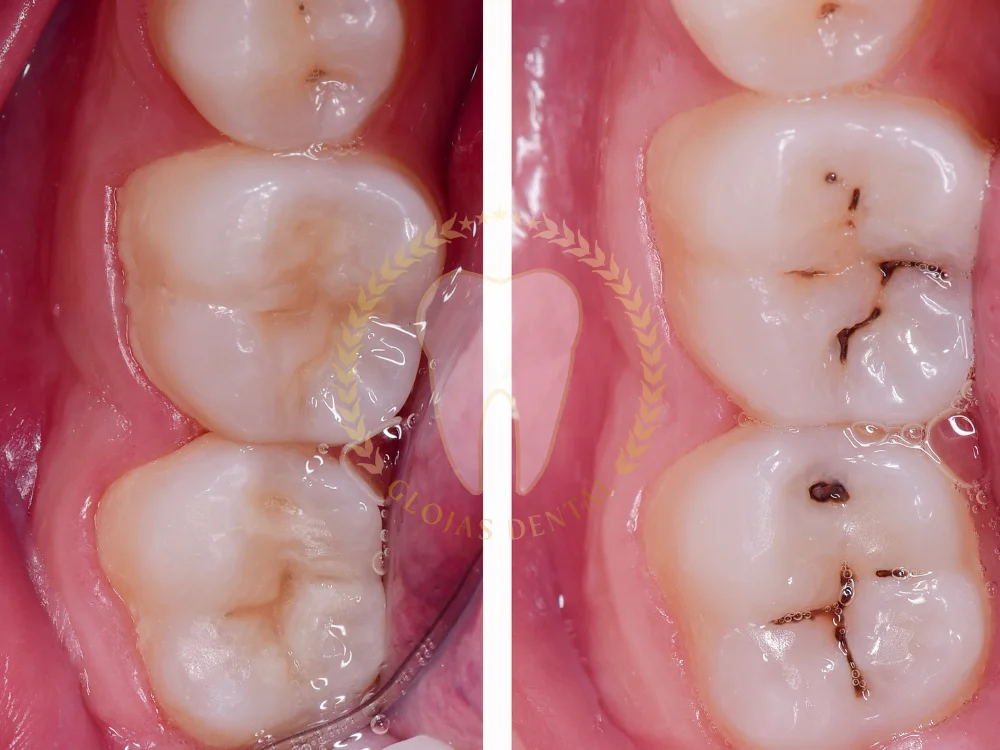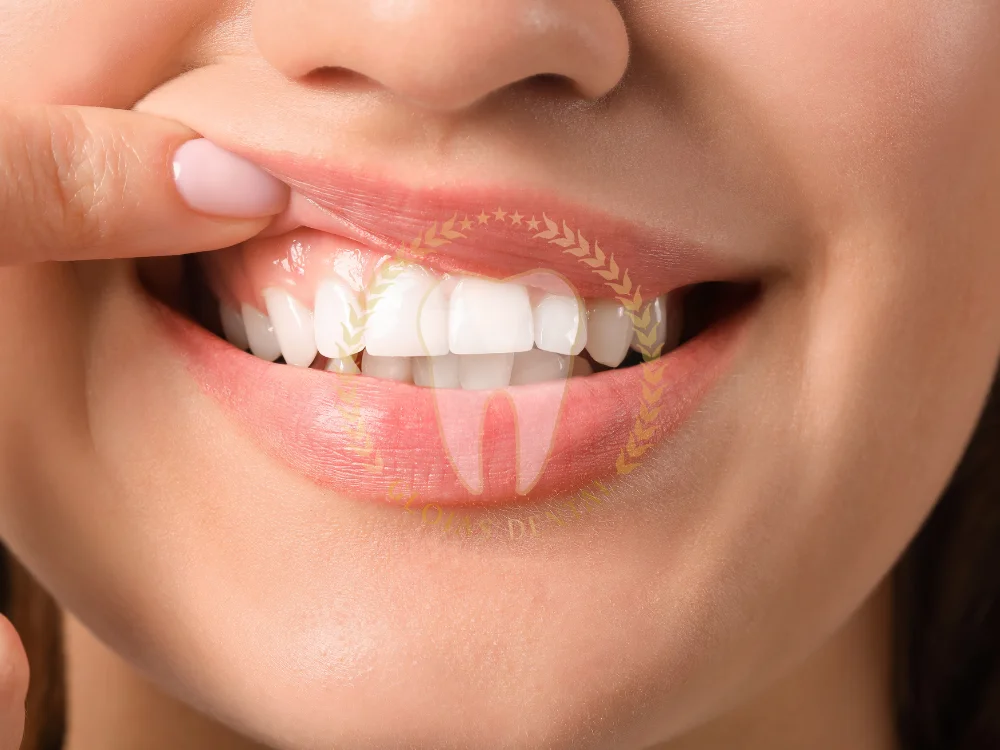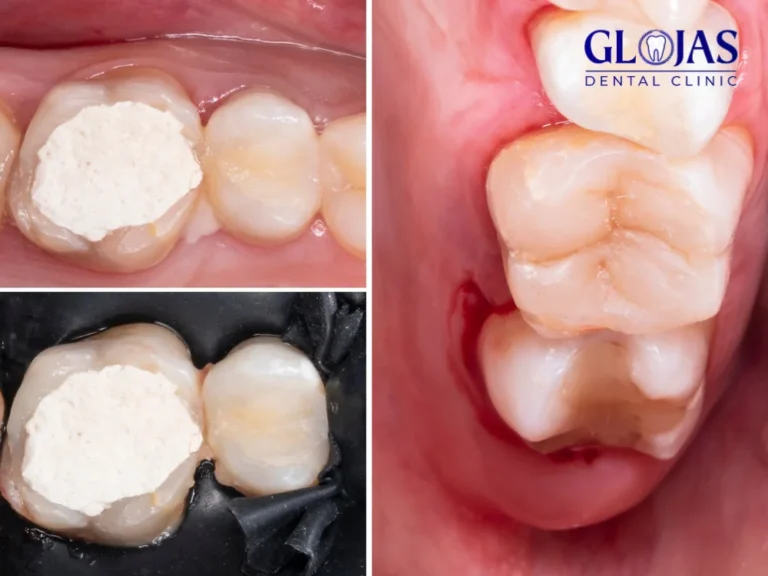Composite teeth, crafted from a tooth-colored resin material, have become a cornerstone of modern restorative and cosmetic dentistry. These versatile materials offer a minimally invasive and cost-effective approach to repairing and enhancing smiles. Unlike more extensive procedures like crowns or veneers, composite bonding can often be completed in a single dental visit, making it a convenient option for many patients.
Whether you’re facing minor imperfections such as chipped or cracked teeth, dealing with discoloration or staining that doesn’t respond to traditional whitening, or seeking to close small gaps between teeth (diastemas), composite bonding can provide a quick, aesthetic, and durable solution. This technique involves applying the composite resin directly to the tooth surface, sculpting it to the desired shape, and then hardening it with a special light. The result is a natural-looking restoration that seamlessly blends with the surrounding teeth, improving both the appearance and functionality of your smile.
What Are Composite Teeth?
Composite teeth refer to a dental restoration technique where tooth-colored resin is applied to improve the appearance and function of teeth. This resin is carefully sculpted and bonded to your natural teeth, creating a seamless and natural-looking result.
The material used in composite teeth mimics the color, translucency, and texture of natural enamel, making it an excellent choice for those seeking a subtle yet impactful transformation.

The Benefits of Composite Teeth
Natural-Looking Aesthetics
Composite teeth are designed to blend seamlessly with your natural smile. The resin is available in various shades, ensuring a perfect match for your tooth color.
Cost-Effective Solution
Compared to veneers or crowns, composite teeth are more affordable while still delivering excellent results. This makes them accessible for patients who want to enhance their smiles without breaking the bank.
Quick and Convenient
Unlike other restorative treatments, composite bonding is typically completed in a single visit. This means less time in the dentist’s chair and quicker results.
Minimally Invasive Procedure
The process requires little to no removal of your natural tooth structure. This preserves the integrity of your teeth, making it a conservative option.
Durable and Long-Lasting
With proper care, composite teeth can last for years. They are resistant to wear and can withstand the pressures of daily chewing and biting.
How Are Composite Teeth Applied?
1. Initial Consultation
Your dentist will assess your teeth to determine if composite bonding is the right solution for you.
2. Preparation
The tooth’s surface is lightly roughened to ensure the resin adheres properly.
3. Application of Composite Resin
The resin is applied in layers, with each layer being hardened using a special curing light.
4. Shaping and Polishing
Once the desired shape is achieved, the composite is polished to match the shine and texture of your natural teeth.

Common Uses for Composite Teeth
Repairing Chipped or Cracked Teeth
Composite resin effectively restores the shape and function of damaged teeth.
Closing Gaps Between Teeth
If you have minor gaps or spaces, composite bonding offers a quick and non-invasive solution.
Covering Discolored Teeth
Stubborn stains that don’t respond to whitening treatments can be concealed with composite bonding.
Reshaping Uneven Teeth
Composite resin can smooth out irregular edges and improve the symmetry of your smile.
How to Care for Composite Teeth
Proper maintenance is essential to prolong the life of your composite teeth. Here are some tips:
- Practice Good Oral Hygiene: Brush twice a day and floss daily to prevent plaque buildup.
- Avoid Staining Foods and Drinks: Limit consumption of coffee, tea, and red wine to keep the resin looking fresh.
- Regular Dental Checkups: Visit your dentist every six months for professional cleanings and exams.
- Protect Your Teeth: If you grind your teeth at night, consider using a mouthguard to prevent damage.
Composite Teeth vs. Other Dental Restorations
Composite Teeth vs. Veneers
- Cost: Composite bonding is more affordable than veneers.
- Procedure: Veneers require more tooth enamel to be removed, while bonding is minimally invasive.
- Longevity: Veneers typically last longer but are also more expensive.
Composite Teeth vs. Crowns
- Coverage: Crowns cover the entire tooth, whereas composite bonding focuses on specific areas.
- Strength: Crowns are stronger and better suited for severely damaged teeth.
- Cost and Time: Composite bonding is quicker and less costly.
Potential Drawbacks of Composite Teeth
While composite teeth offer many advantages, they aren’t without limitations:
- Less Resistant to Stains: Over time, the resin may discolor, especially if exposed to staining agents.
- Shorter Lifespan: Although durable, composite bonding doesn’t last as long as veneers or crowns.
- Prone to Chipping: Excessive force can cause the material to chip, so caution is advised.

FAQs About Composite Teeth
1. What is the lifespan of composite teeth?
With proper care, composite teeth can last between 5 and 10 years. Regular dental visits and good oral hygiene are crucial to maintaining their longevity.
2. Are composite teeth suitable for everyone?
Composite bonding is ideal for minor to moderate dental issues. However, severe damage or misalignment may require alternative treatments like veneers or crowns.
3. How much do composite teeth cost?
The cost varies based on location and the complexity of the case but typically ranges from $100 to $400 per tooth.
4. Can composite teeth be whitened?
No, composite resin does not respond to traditional whitening treatments. If discoloration occurs, your dentist may recommend polishing or replacing the resin.
5. Is the procedure painful?
Composite bonding is minimally invasive and typically painless. Anesthesia is usually not required unless significant reshaping is involved.
6. Can I eat normally after getting composite teeth?
Yes, but it’s best to avoid hard or sticky foods for the first 24 hours to allow the resin to fully set.
Conclusion
Choosing composite teeth, whether in the form of composite bonding, veneers, or fillings, represents an investment in a versatile, cost-effective, and aesthetically pleasing solution for achieving a brighter, more confident smile.
Composite materials offer a unique blend of advantages, making them a popular choice in modern dentistry. They can be precisely matched to the shade of your existing teeth, providing a seamless and natural-looking restoration. Unlike some other restorative materials, composite bonds directly to the tooth structure, strengthening it and minimizing the need for extensive tooth preparation. This minimally invasive approach preserves more of your natural tooth, promoting long-term oral health. Furthermore, composite materials are relatively affordable compared to other options like porcelain, making them accessible to a wider range of patients.
Whether you’re addressing minor chips, cracks, discoloration, or larger cavities, composite restorations can effectively improve the appearance and function of your teeth. By consulting with your dentist, you can determine if composite restorations are the right choice for your specific needs and embark on a journey toward a healthier, more radiant smile.
